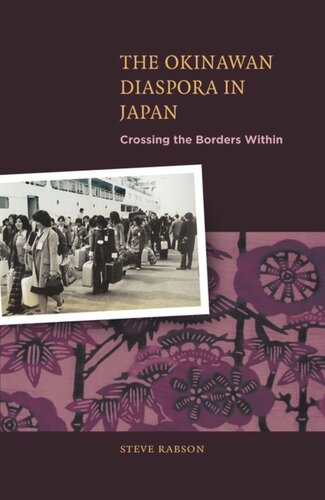

Most ebook files are in PDF format, so you can easily read them using various software such as Foxit Reader or directly on the Google Chrome browser.
Some ebook files are released by publishers in other formats such as .awz, .mobi, .epub, .fb2, etc. You may need to install specific software to read these formats on mobile/PC, such as Calibre.
Please read the tutorial at this link: https://ebookbell.com/faq
We offer FREE conversion to the popular formats you request; however, this may take some time. Therefore, right after payment, please email us, and we will try to provide the service as quickly as possible.
For some exceptional file formats or broken links (if any), please refrain from opening any disputes. Instead, email us first, and we will try to assist within a maximum of 6 hours.
EbookBell Team

4.7
66 reviewsThe experiences of Okinawans in mainland Japan, like those of migrant minorities elsewhere, derive from a legacy of colonialism, war, and alien rule. Okinawans have long coped with a society in which differences are often considered “strange” or “wrong,” and with a central government that has imposed a mono-cultural standard in education, publicly priding itself on the nation’s mythical “homogeneity.” They have felt strong pressures to assimilate by adopting mainland Japanese culture and concealing or discarding their own. Recently, however, a growing pride in roots has inspired more Okinawan migrants and their descendants to embrace their own history and culture and to speak out against inequities. Their experiences, like those of minorities in other countries, have opened them to an acute and illuminating perspective, given voice in personal testimony, literature, and song.
Although much has been written on Okinawan emigration abroad, this is the first book in English to consider the Okinawan diaspora in Japan. It is based on a wide variety of secondary and primary sources, including interviews conducted by the author in the greater Osaka area over a two-year period. The work begins with the experiences of women who worked in Osaka’s spinning factories in the early twentieth century, covers the years of the Pacific War and the prolonged U.S. military occupation of Okinawa, and finally treats the period following Okinawa’s reversion to Japan in 1972. Throughout, it examines the impact of government and corporate policies, along with popular attitudes, for a compelling account of the Okinawan diaspora in the context of contemporary Japan’s struggle to acknowledge its multiethnic society.
The Okinawan Diaspora in Japan will find a ready audience among students of contemporary Japanese history and East Asian societies, as well as general readers interested in Okinawans and other minorities living in Japan.